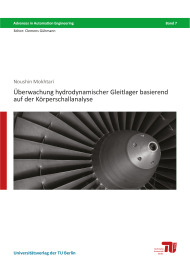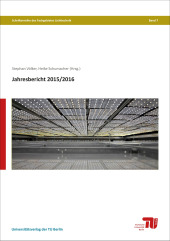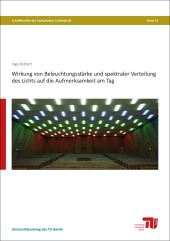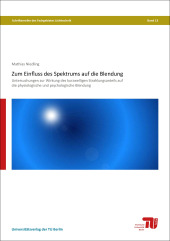Überwachung hydrodynamischer Gleitlager basierend auf der Körperschallanalyse

Size: 188 pages
Format: 17,0 x 24,0 cm
Publishing year: 2020
Format: 17,0 x 24,0 cm
Publishing year: 2020
Reihe: Advances in Automation Engineering ; 7
ISBN 978-3-7983-3183-9
18,50 €
For aviation engines early fault detection of wear components is essential. However, reliable and effective monitoring of hydrodynamic journal bearings is a great challenge for the aviation industry. The measured variables used in most applications are either not sensitive enough or do not meet the requirements of limited design space. The acoustic emission (AE) technology meets both criteria, and is therefore used in this work. In order to perform automatic monitoring, machine learning methods are suitable, which recognize patterns in a data series based on mathematical algorithms and subsequently evaluate the system condition independently and automatically.
Hydrodynamic journal bearings use the supporting lubricant film, created by the relative movement between the shaft and the journal bearing material, to support loads. If the supporting lubricant film fails due to unfavourable operating conditions such as high loads, low speeds, high temperatures or start-stop operations, the sliding partners come into contact and mixed or dry friction occurs. These two friction conditions cause wear and therefore reduce the lifetime of hydrodynamic journal bearings. This work is thus divided into two main parts: Friction investigations to develop a friction state classifier and wear investigations to estimate the current wear volume using AE analysis and machine learning methods.
The friction states fluid, mixed and dry friction are generated by suitable experiments under varying speeds, loads and temperatures using journal bearing test rigs developed within the scope of this work. The patterns generated during these experiments are afterwards assigned to the correct friction class by preprocessing the AE signals, feature extraction from time, frequency and time-frequency domain and use of different classifiers such as k-nearest neighbor (kNN) or support vector machines (SVM). With the help of AE features and tactile surface measurements as validation the possibility of monitoring run-in wear during short-term tests is shown. In addition, long-term tests at constant speed, load and temperature are carried out, followed by the development of a model estimating the wear volume based on AE analysis. The integrated AE Root Mean Square (RMS) is used as independent variable and the journal bearing wear volume as the dependent variable of a regression model. These results lead to further questions, such as the localization of friction events over the circumference of the journal bearing. This is achieved by fusing the AE signal and the zero pulse signal of an incremental encoder as well as making use of the amplitude modulation effect.



